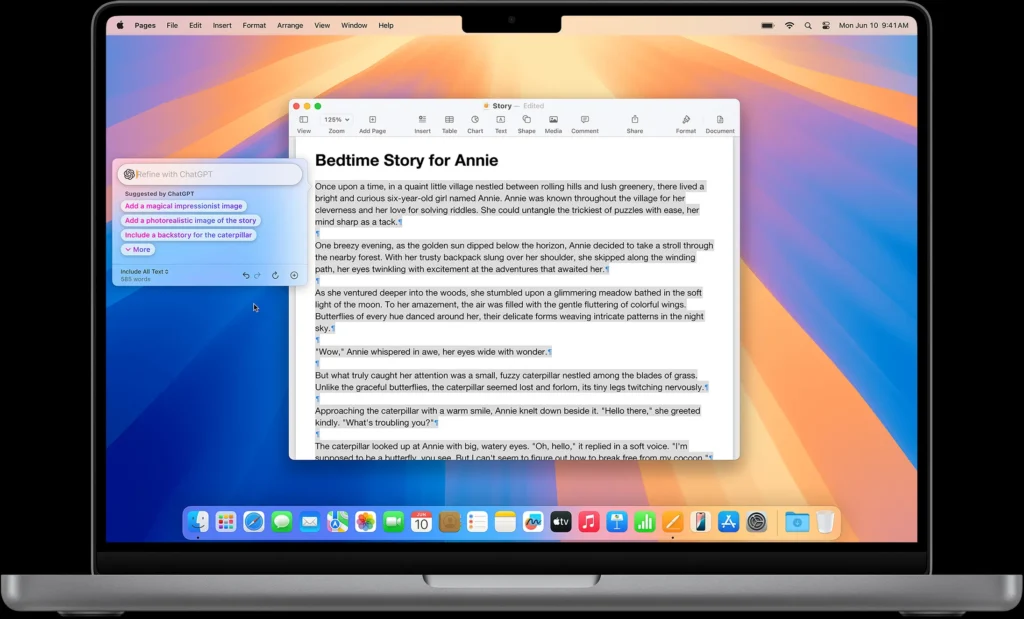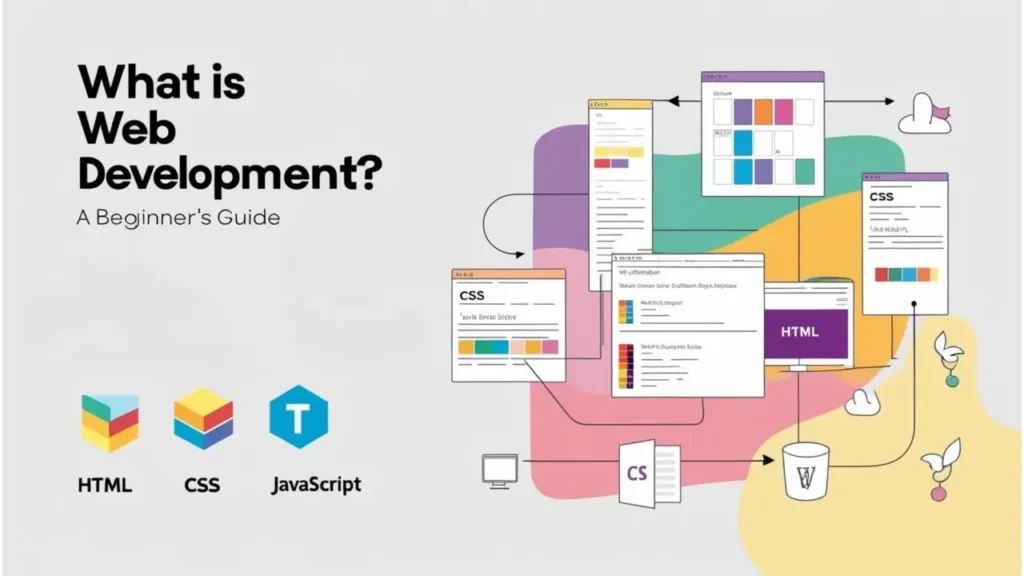What is Apple Intelligence?
Apple Intelligence is Apple’s answer to the growing demand for more personalized, intuitive, and secure artificial intelligence solutions across personal devices. With its introduction in iOS 18, iPadOS 18, and macOS Sequoia, Apple has redefined what AI can do in everyday life. This new suite of AI-powered tools operates at the core of Apple’s ecosystem, enhancing user experiences on iPhones, iPads, and Macs. Unlike other AI systems, which rely heavily on cloud-based data processing, Apple Intelligence operates primarily on-device, ensuring that personal information stays private. Apple’s approach to AI is rooted in three core principles: Powerful, Personalized, and Private.
The power of Apple Intelligence lies in its deep integration with Apple’s hardware and software. By embedding AI into the system, Apple creates a seamless experience that adapts to each user’s habits and preferences. From advanced language tools to sophisticated image creation features, Apple Intelligence enhances every aspect of device interaction while keeping the focus on user privacy. Apple distinguishes itself by ensuring that these AI tools are not just reactive but proactive, offering users smarter, more intuitive assistance without sacrificing security.
Core Features of Apple Intelligence
Language Tools
One of the standout aspects of Apple Intelligence is its advanced language tools, which empower users to communicate more effectively and efficiently across all apps, including third-party applications. These tools provide robust text editing capabilities, allowing users to rewrite, proofread, and summarize their content with ease. Whether drafting an email, crafting social media posts, or taking notes, users can rely on AI-powered suggestions to enhance the clarity and coherence of their messages.
Moreover, the integration of AI into system-wide notifications helps prioritize important communications. Smart Replies generate quick, contextually aware responses, saving users time and ensuring that they stay engaged with their most critical contacts. Priority Notifications, another language-driven feature, helps users manage their information intake by surfacing urgent messages while filtering out less important ones . This ensures that users stay focused on what truly matters, whether at work or during personal time.

Image Tools
Apple Intelligence takes image creation and editing to the next level by leveraging AI to deliver powerful, user-friendly tools. Whether you’re a professional content creator or a casual user, Apple’s AI-powered image tools enable you to edit, create, and manipulate images with unprecedented ease. The Image Wand feature, for example, allows users to remove unwanted objects from photos with a single tap. This tool delivers results similar to advanced photo editing software but in a simpler and faster format.
In addition to enhancing images, Apple Intelligence introduces Genmoji, a tool that allows users to create personalized emojis based on custom descriptions. This feature adds a fun, creative element to digital communication, providing users with a unique way to express themselves . Moreover, Apple’s Memory Movies utilize AI to compile user photos and videos into personalized videos that tell a coherent, engaging story based on simple text prompts . This feature is ideal for users looking to create meaningful visual narratives with minimal effort.
Siri’s Overhaul
With Apple Intelligence, Siri becomes significantly more powerful, offering users a more natural, intuitive way to interact with their devices. The upgraded Siri can now handle complex, multi-step commands with ease. For example, users can ask Siri to add an event to their calendar from an email without having to specify each detail. Siri understands context better than ever before, making interactions smoother and less cumbersome.
What truly sets Siri apart now is its ability to remember previous conversations and pick up where they left off. This allows users to correct or modify commands without needing to start from scratch. Siri’s cross-app functionality is another major enhancement, enabling users to perform tasks across multiple applications without manual input . Whether adding information from Messages to Contacts or sharing location details through Calendar, Siri’s deeper integration with Apple’s ecosystem helps automate routine tasks and improve overall user efficiency.

Privacy at the Heart of Apple Intelligence
Apple has long championed user privacy, and Apple Intelligence is a testament to that commitment. Unlike other AI systems that depend heavily on cloud processing, Apple Intelligence performs most of its computations on-device. This significantly reduces the need for data to leave the user’s personal device, ensuring that sensitive information remains private . When off-device processing is required, Apple uses its Private Cloud Compute, a secure system that encrypts data to safeguard user information. This privacy-focused architecture positions Apple as a leader in AI security, offering peace of mind in an increasingly data-driven world.
Apple’s privacy measures go beyond standard encryption. They involve cryptographic verification of server-side software, ensuring that only authorized software interacts with the user’s device . This level of transparency and control gives users confidence in the security of their data while enjoying the full benefits of Apple Intelligence. In a landscape where other AI providers may prioritize data collection, Apple’s privacy-first approach sets a new standard for responsible AI development.
Apple Intelligence vs. Competitors: Google, Amazon, and Microsoft
Apple Intelligence stands apart from other AI systems by focusing on privacy, personalization, and seamless integration across devices. Here’s how it compares with major competitors:
•Google Assistant: Google’s AI is highly advanced in terms of natural language understanding and integration with a wide range of services. However, its heavy reliance on cloud processing can pose privacy concerns, as user data is often stored and analyzed on external servers.
•Amazon Alexa: Alexa is primarily known for its role in smart home automation, but it lacks the level of personalization and privacy offered by Apple Intelligence. While Alexa is excellent for controlling smart devices, its AI lacks the deep contextual understanding and on-device processing of Apple’s system.
•Microsoft Cortana: Microsoft’s Cortana is designed for productivity and business use, but it doesn’t offer the seamless, cross-device integration that Apple Intelligence does. Additionally, Microsoft’s AI tools don’t prioritize privacy in the same way as Apple’s, which can be a drawback for users concerned about data security.
Apple’s unique position in the AI space stems from its holistic approach—balancing advanced AI capabilities with rigorous privacy standards. As a result, Apple Intelligence is becoming the preferred choice for users who value both innovation and data protection.

Apple Intelligence in Everyday Use
Productivity Tools
Apple Intelligence is designed to enhance everyday productivity by simplifying workflows and automating tasks. Features like Smart Summaries enable users to quickly distill the key points from lengthy articles, emails, or reports, saving valuable time. For professionals, this is a game-changer, allowing them to manage their workload more efficiently without sacrificing quality.
Moreover, the integration of AI into Apple’s Focus Mode helps users minimize distractions. By learning user behaviors and preferences, the AI-driven Focus Mode intelligently filters out non-essential notifications, ensuring that users remain focused on important tasks. This feature, combined with Priority Notifications, helps users maintain concentration without missing critical updates.
Content Creation Tools
Apple Intelligence also offers powerful tools for content creators. The Compose feature allows users to draft high-quality content with AI-driven suggestions, ensuring that their writing is clear, concise, and engaging. This tool can be used across various applications, from emails to social media posts, giving users more control over their digital presence.
In addition to writing tools, Apple Intelligence’s Image Wand and Memory Movies make it easy to create professional-looking visual content. These tools enable users to edit and compile images and videos with minimal effort, making them ideal for both casual users and creative professionals.

Communication Enhancements
In terms of communication, Apple Intelligence introduces several features that streamline messaging and email management. Smart Replies and Priority Notifications work in tandem to ensure that important messages are responded to promptly while less critical notifications are managed quietly. These AI-driven tools help users maintain productivity without being overwhelmed by the constant influx of notifications.
Device Compatibility and System Requirements
The advanced features of Apple Intelligence require modern hardware to function optimally. As such, only certain devices are compatible. Apple Intelligence is available on iPhones starting from the iPhone 12, iPads beginning with the iPad Pro and iPad Air 4th generation, and Macs powered by M1 chips or later.
This section highlights the technological requirements behind Apple’s AI and explains how the powerful chipsets in modern Apple devices enable seamless on-device processing for AI tools. It also emphasizes that older devices may not support the full suite of AI features, encouraging users to upgrade for the best experience.
The Role of AI in Apple’s Ecosystem
Apple Intelligence isn’t just confined to individual apps or specific tasks—it plays a crucial role in enhancing the overall user experience across the entire Apple ecosystem. This includes its seamless integration with services like iCloud, Apple Music, and Apple Fitness+, as well as third-party applications that are part of the App Store. By building AI capabilities directly into iOS, iPadOS, and macOS, Apple ensures that users experience a consistent, intelligent interface across all their devices.

AI in Third-Party Apps
Apple has extended the capabilities of Apple Intelligence to third-party developers via frameworks such as CoreML and CreateML. This gives developers the tools to integrate advanced machine learning models directly into their applications, enhancing the functionality of apps in areas such as image recognition, language processing, and predictive text . For example, photo-editing apps can leverage Apple Intelligence’s on-device AI to offer features like object removal or advanced photo enhancement without needing to send data to external servers.
These developer tools enable the creation of apps that offer AI-driven functionalities, allowing users to perform tasks like language translation, real-time image processing, or complex data analysis directly on their devices. With AI embedded at the core of these apps, users benefit from faster processing, enhanced privacy, and a more integrated experience across the Apple ecosystem.
Integration with iCloud and Apple Services
The integration of Apple Intelligence with iCloud adds another layer of utility and privacy. AI-powered features such as Memory Movies and Photo Search use AI models to scan, organize, and display user content without compromising privacy, as most of the processing is handled on-device. For example, when searching for specific photos based on descriptions like “beach sunset” or “family dinner,” Apple Intelligence can quickly find relevant images from a user’s iCloud Photo Library.
Similarly, Apple Music utilizes AI to create personalized playlists, recommend new music, and curate daily mixes based on user preferences and listening habits. This AI-driven personalization provides a more tailored and engaging experience for users, demonstrating how Apple Intelligence extends beyond just task management into entertainment and lifestyle apps.
AI in Augmented Reality and Future Developments
As Apple continues to develop its ARKit framework, Apple Intelligence will play a pivotal role in driving the next wave of augmented reality (AR) experiences. The combination of AI and AR will allow for more immersive, intelligent experiences, whether through gaming, education, or productivity apps. With VisionOS on the horizon, Apple’s venture into mixed reality will likely see deeper AI integrations, helping to make AR interactions more responsive, intuitive, and personalized.
The Future of Apple Intelligence
While Apple Intelligence is already revolutionizing how users interact with their devices, the company’s roadmap for AI hints at even more ambitious innovations. As AI technology advances, Apple is expected to expand the capabilities of Apple Intelligence, offering users an even more integrated, intuitive, and secure experience.
AI-Driven Augmented Reality
As Apple shifts its focus to augmented reality, AI will play a crucial role in enhancing AR applications. The introduction of VisionOS, designed for future mixed-reality devices like Apple Vision Pro, will enable Apple Intelligence to operate in real-time within AR environments . For example, users might be able to manipulate 3D objects in virtual space using gestures or voice commands, while AI adapts these objects based on user preferences and previous interactions. AI’s ability to process and interpret real-world data in these environments will provide users with an unprecedented level of interaction and control.
Smarter Contextual AI
Looking ahead, Apple is working to make Apple Intelligence even more contextually aware. This means Siri and other AI features will not only respond to user commands but will anticipate needs based on context. For example, if a user frequently checks the weather before going for a run, Apple Intelligence could proactively provide a weather update and suggest optimal running times based on the forecast . This next level of contextual intelligence will make AI interactions more fluid and intuitive, blending seamlessly into users’ daily routines.

Expanding Developer Tools
In addition to enhancing user-facing features, Apple is expected to expand the capabilities of its developer tools, such as CoreML and CreateML. This will allow developers to build even more sophisticated AI applications, extending the benefits of Apple Intelligence across a wide variety of third-party apps. These updates will likely focus on improving the efficiency and ease with which developers can implement machine learning models, bringing advanced AI capabilities to more users without sacrificing privacy or performance .
FAQ’s
1. What is Apple Intelligence?
Apple Intelligence is a suite of AI-powered tools integrated into iOS 18, iPadOS 18, and macOS Sequoia. These tools enhance productivity, communication, and creativity, while prioritizing user privacy through on-device processing.
2. How does Apple Intelligence enhance Siri?
Apple Intelligence makes Siri more contextually aware and capable of handling complex, multi-step commands. Siri can now perform tasks across apps and respond more naturally to changing requests, making it a more powerful virtual assistant.
3. Is Apple Intelligence available on all devices?
No, Apple Intelligence requires newer hardware due to its reliance on advanced processing capabilities. It is available on iPhone 12 and later, iPad Pro and iPad Air 4th generation and later, and Macs with M1 chips and newer.
4. How does Apple ensure privacy with Apple Intelligence?
Apple Intelligence performs most AI operations on-device, reducing the need for cloud processing. When cloud access is required, Apple uses its Private Cloud Compute system, which encrypts and protects user data.
5. What role does AI play in Apple’s future plans?
Apple plans to expand the use of AI in augmented reality and mixed reality through VisionOS, as well as improve developer tools for integrating AI into third-party apps. The future of Apple Intelligence will include deeper contextual understanding and broader AI applications across all Apple devices.
Conclusion: The Future Impact of Apple Intelligence on AI Evolution
Apple Intelligence is poised to play a central role in the future of AI-driven technology. By embedding AI deeply into its hardware and software ecosystem, Apple has created a platform that not only enhances the usability of its devices but also prioritizes privacy and personalization. The features offered by Apple Intelligence—ranging from enhanced Siri functionality and image tools to AI-driven content creation—demonstrate how AI can make everyday tasks more efficient, creative, and engaging.
As AI continues to evolve, Apple’s commitment to privacy and on-device processing will set it apart from competitors who rely more heavily on cloud-based data processing. The future developments in AR and mixed reality, powered by VisionOS, signal that Apple’s AI ambitions extend beyond smartphones and computers, positioning the company as a leader in shaping the next generation of personal computing . The combination of intuitive AI features and strong privacy protections ensures that Apple Intelligence will remain at the forefront of AI innovation for years to come.

Apple Intelligence represents a paradigm shift in how users will interact with technology. Its ability to anticipate needs, streamline tasks, and provide creative tools—while maintaining rigorous privacy standards—demonstrates that AI can be both smart and secure. As the platform evolves and new features are introduced, Apple Intelligence will continue to transform the way we use technology, driving the future of AI forward in ways that are personal, intuitive, and trustworthy.
For more detailed insights straight from the source, visit the official Apple Intelligence page to explore how Apple is revolutionizing AI across its devices.
For more insights, make sure to check out our blogs for the latest updates.












